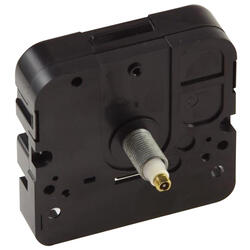Electronic Clock Mechanisms as well as their Traits

The clock devices these days are no more mechanical yet electronic, obtaining their pressure as well as accuracy from quartz crystals. These clock mechanisms are called movements in the trade, however are also understood in layperson terms as motors. They are in charge of moving the hands into proper position so that they point at the icons or numbers appearing on the dial, and also they do this online, using software, instead of through a difficult gear network.
Due to the fact that digital clock systems have a different mode of operation from the conventional ones, they can functions as well as characteristics that can at times appear wacky. The older approach was to use a heavy weight or coiled spring to apply torque to a flywheel, subdividing the resulting rotation utilizing equipment proportions to get angular rates corresponding to secs, minutes, and hrs. A pendulum, combined with an escapement, managed the timing.
The electronic motors obtain the exact same end result, yet without the large devices. It all begins with a quartz crystal that sends out a consistent stream of pulses at an extremely fast as well as incredibly exact rate. Digital signs up matter the pulses, as well as when various count thresholds are reached, the equivalent shaft increments the hand to the next position.
In the past, anything elegant or idiosyncratic or beyond typical called for new detailed devices involving gears in elaborate ratios. But now, software program is so versatile that pushing the envelope is simply an issue of layout as well as shows. So one has actually seen even more things being tracked and also presented, as well as practical mixes ever a lot more appealing.
Take timekeeping expansions as an example. The standard clock shows a 12-hour cycle, with 2 or three hands (i.e., with or without a pre-owned) spinning among a lots characters equally distributed along the dial's circumference. Extending the cycle to 24-hour is rather of a trait, though all that is truly needed is a printing of the numbers from 13 to 24 in about the same placements as the collection of 1 to 12 currently occupying the dial.
Getting back at quirkier, one can prolong the cycle to 7 days and even a complete month. This requires even more changes in regards to hardware, calling for a specifically adjusted dial, a various system, and a 4th hand. For the month cycle, the added hand points to one of 31 numbers ranged around the dial's periphery, whereas for the week cycle a much shorter hand indicate among the days of the week published in the center of the dial.
An actually quirky movement is one that shows the change in trend degree, which is affected by both lunar and solar cycles, leading to a tidal period of 1 day and 50 mins. This can be a stand-alone timepiece, or it can be integrated with a regular clock, the trend information being displayed in the dial's center, similar to the day-of-the-week clock stated above. Tide-level mechanisms featured a control so that they can be adjusted to account for vibrations and also various other regional problems.
Going even additionally afield from traditional clocks, one can get weather motions for showing such details as temperature, moisture, or barometric pressure. These systems are not based on crystal pulses however include the conversion of information gotten from sensors right into mathematical values within a particular range. The corresponding hand is then slanted to show that value on the dial.
A few of one of the most lovely quirks are holdovers from the prime times of clock structure, no longer integral to the functioning of the device, however eye-catching for cosmetic or sentimental reasons. Such uniqueness include pendulums and chimes, and also several contemporary movements make these supplementary attributes offered as alternatives. We urge the reader to venture out into developing extra heavy wrist watches, now that she has a much better understanding of electronic clock systems and their traits.
